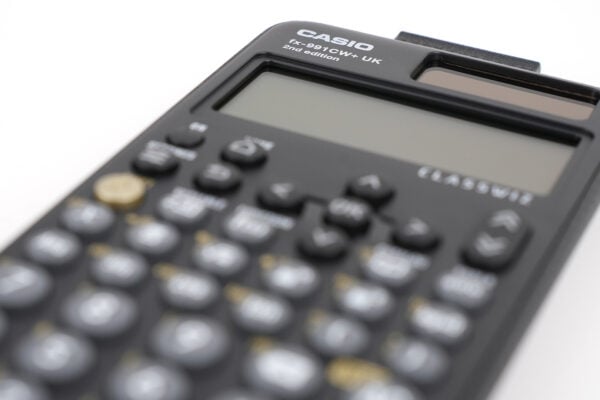Could calculators help create more scientists?

Could calculators help create more scientists?
We need more scientists, but it’s always been hard to attract talented students to STEM subjects. Could new technology like calculators solve the problem? Let’s find out more.
STEM subjects science, technology, engineering and maths have struggled over recent years. Not enough new teachers of STEM subjects have joined the industry, while talented students are avoiding STEM subjects once they get to choose what they can study. This is a problem because the country (and the world) needs more scientists to solve its problems. We’ve seen during the Coronavirus pandemic how indispensable scientists are.
However, help could be at hand in the shape of new technology. STEM teachers have found that students are more engaged and learn better when they introduce new tech into the learning process. Even the humble calculator can play a part in bringing STEM to life. In this article, we’ll find out how.
How technology makes STEM subjects more engaging
STEM used to have an image problem, especially compared to other school subjects that students could choose. The problem was, science was thought of as quite abstract, not something students could relate to as something they see every day.
Where technology excels is putting the student at the centre of the learning experience and showing them the impact of science on their lives. For example, computer simulations can show students the relative sizes of cells across different species, so they can instantly see how they fit into the world around them.
Technology helps create that all-important feeling of accomplishment that you need when you’re selling a subject to a student. It brings science to life in a way that textbooks do not. Hopefully, it will help us create more scientists, at a time when we need them the most.
How calculators make maths lessons more effective
Calculators help make maths lessons snappier and help students understand mathematical principles quicker. It’s often the technology that gets students interested in maths and keeps them coming back for more.
The calculator has come a long way in recent years. For example, the Casio fx-CG50 is a graphical calculator with a high-resolution colour screen that can display graphs in 3D. It even comes with the Python programming language built-in, allowing students to try their hand at coding. Calculators like the CG50 show students that there’s more to maths than numbers it’s about solving problems.
In the classroom, Casio emulators allow teachers to display their calculator on a screen so the whole class can follow what they’re doing. When you show a student rather than tell them, it’s much more likely that they’ll be engaged and retain the knowledge. Then, when they can solve problems for themselves, they get that feeling of accomplishment and understand better how maths works.
Grab your Casio calculator today
The pandemic showed the world the essential work that scientists do to solve the world’s problems. It got talented students thinking about science as a career path again, which is great. But of course, to achieve anything in science, you need a solid grounding in maths.
From the beginning to the end of your school career (and beyond), the Casio family of scientific and graphic calculators can help you better understand mathematics and achieve the results you deserve.



